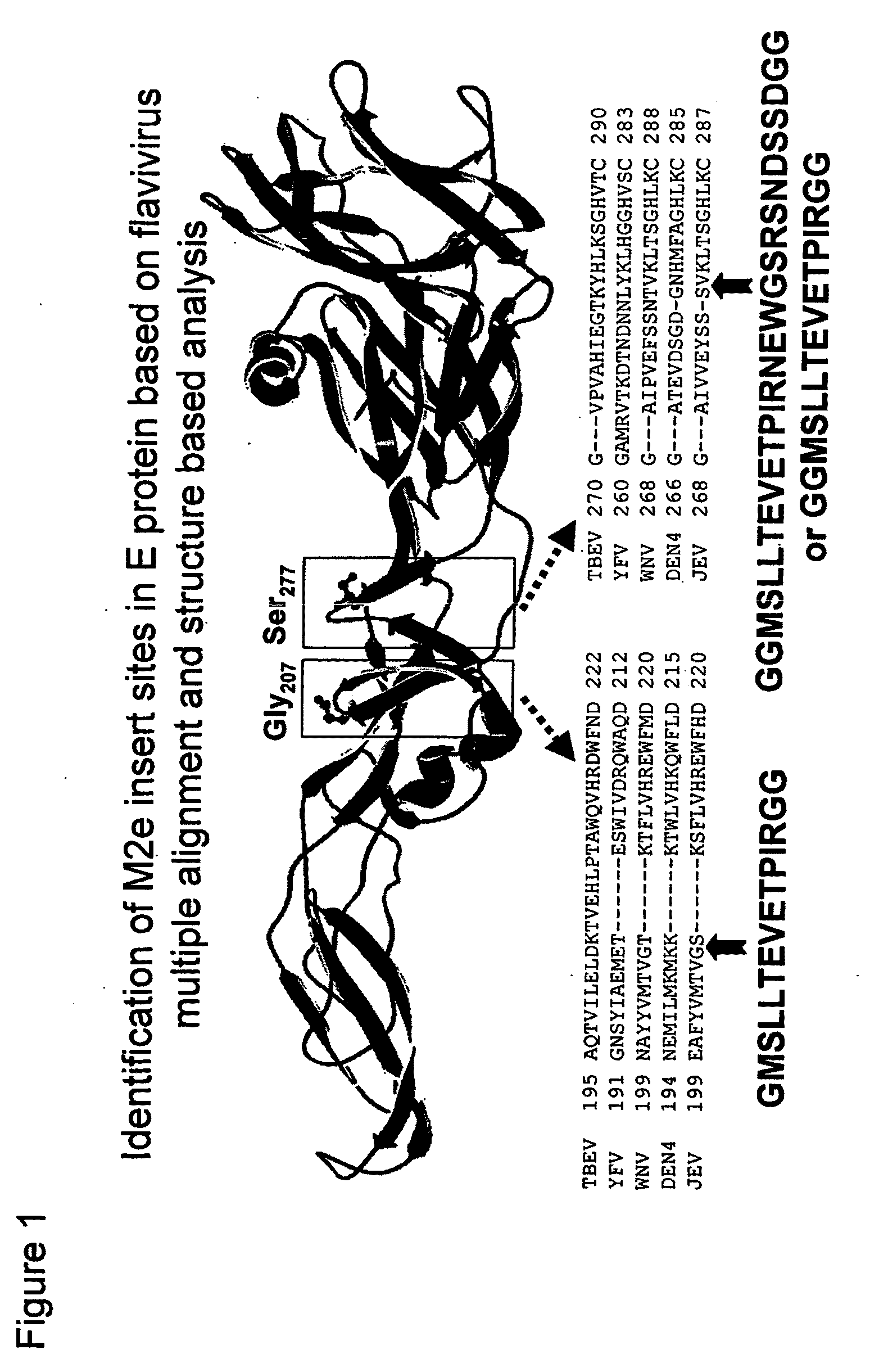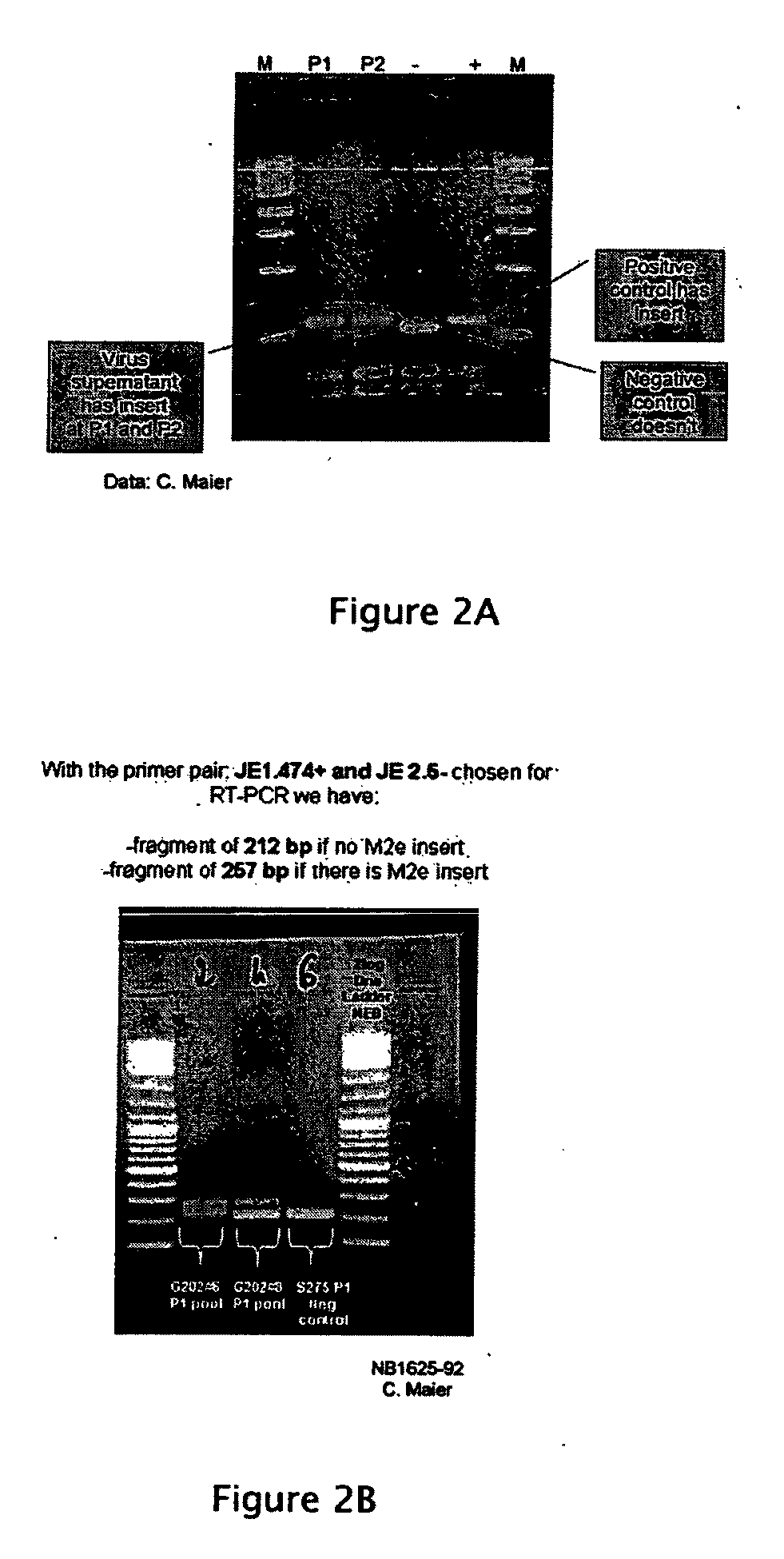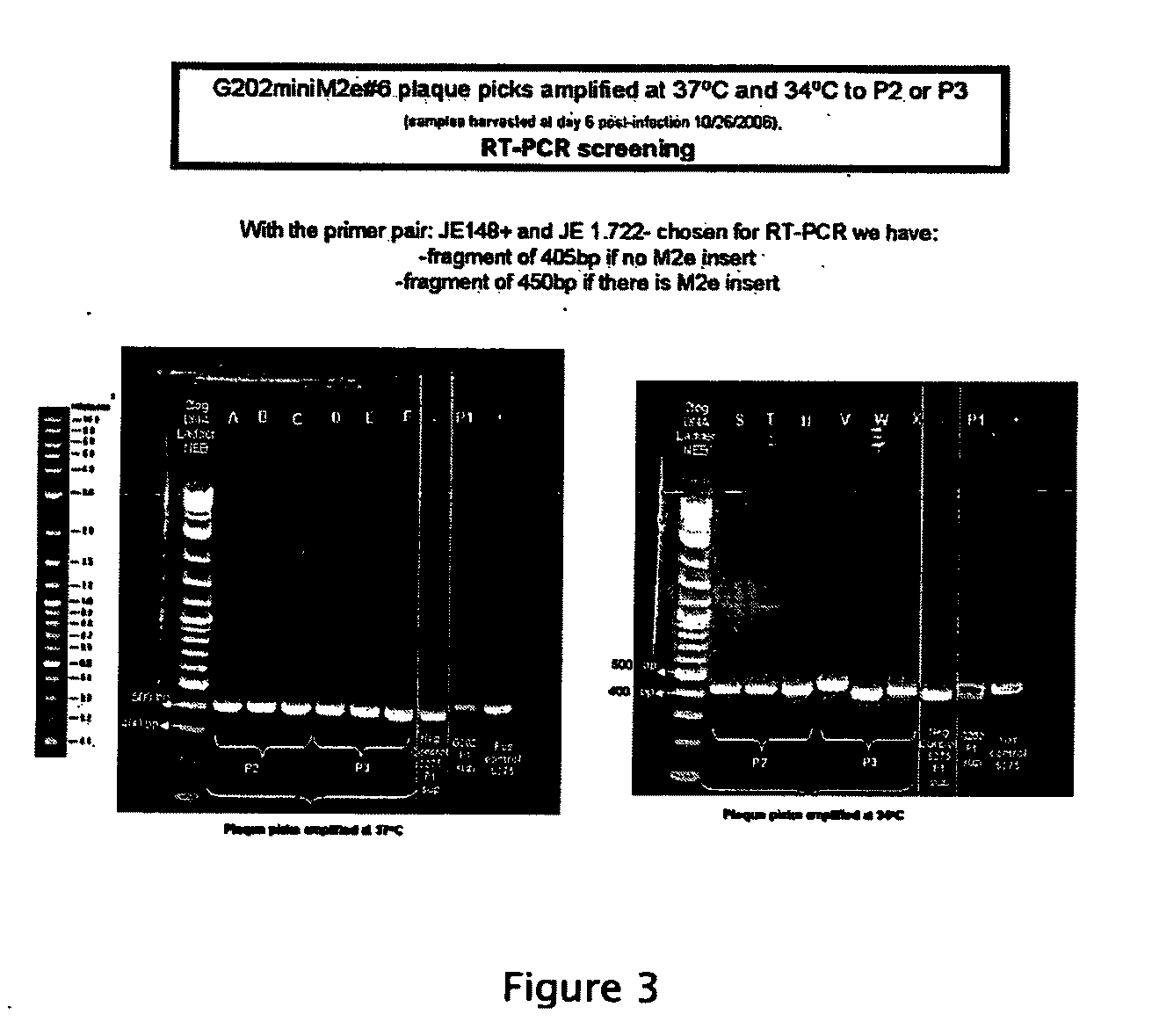Flavivirus Vaccine Vector Against Influenza Virus
a technology of fluvirus and vaccine vector, applied in the field of viral vectors, can solve the problems of not ensuring that a selected site is permissive/optimal for the insertion of every desired foreign peptide, inapplicability to viral proteins for which three-, and insufficient immunogenicity and stability, so as to eliminate the chance of adverse events, prevent infection, and prolong the effect of immune respons
- Summary
- Abstract
- Description
- Claims
- Application Information
AI Technical Summary
Benefits of technology
Problems solved by technology
Method used
Image
Examples
Embodiment Construction
[0037]The invention provides live, attenuated viral vectors that can be used in the administration of vaccine antigens, such as vaccine antigens against influenza virus. Also included in the invention are methods of using these vectors in methods for preventing and treating influenza virus infection, pharmaceutical compositions including the vectors, and nucleic acid molecules corresponding to genomes of the viral vectors or the complements thereof. As discussed further below, the viral vaccine vectors of the invention can be used to induce long-lasting immune responses against specific influenza antigens. For example, the vaccine vectors of the present invention can be used to express a universal influenza antigen that is inserted into a highly immunogenic site, the flavivirus envelope (E) protein. The invention provides compositions intended to protect animals, including humans, against a broad range of influenza strains. Further, the invention provides methods of making and propa...
PUM
| Property | Measurement | Unit |
|---|---|---|
| temperature | aaaaa | aaaaa |
| temperature | aaaaa | aaaaa |
| temperature | aaaaa | aaaaa |
Abstract
Description
Claims
Application Information
 Login to View More
Login to View More - R&D
- Intellectual Property
- Life Sciences
- Materials
- Tech Scout
- Unparalleled Data Quality
- Higher Quality Content
- 60% Fewer Hallucinations
Browse by: Latest US Patents, China's latest patents, Technical Efficacy Thesaurus, Application Domain, Technology Topic, Popular Technical Reports.
© 2025 PatSnap. All rights reserved.Legal|Privacy policy|Modern Slavery Act Transparency Statement|Sitemap|About US| Contact US: help@patsnap.com



